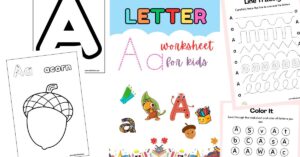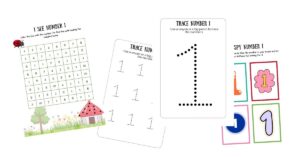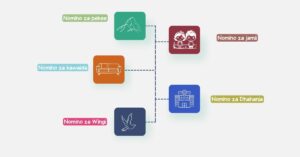Puzzles are a fun way for children to play, learn new concepts and even manage stress and anxiety. Games influence a child’s problem-solving, logical, and mathematical capabilities by helping with memory and pattern recognition. Given their excellent combination of entertainment and mental stimulation, it is no wonder that most children love puzzles. But to maximize these benefits, you need to get the right puzzle for your child’s age and ability.
A five-year-old should have a puzzle with up to 60 pieces. Puzzles with more than 60 pieces may be too challenging to complete, which may frustrate your child. Puzzles with less than ten pieces are too easy and uninteresting.
The trick is to balance between puzzle difficulty and your child’s capabilities. A puzzle’s difficulty level depends on:
- The number of puzzle pieces
- The sizes of the pieces
- The subject matter of the final image
- The shape, details, and color variations of the final image
To choose the right puzzle for your child, consider their age, previous experience with puzzles, and difficulty level. Now let’s take a closer look at choosing the best puzzle for your child based on age.

Under 3 Years Old
Children under the age of 3 do well with inset puzzles. Inset puzzles are the simplest all your child does is place the puzzle piece in its appropriate indentation. The puzzle pieces are also unconnected, which means they can focus on one piece at a time instead of trying to create a bigger picture, as in more complex puzzles. The three main types of inset puzzles are:
- Knob puzzles
- Chunky puzzles
- Peg puzzles
As an introduction to puzzles, knob puzzles are the best choice because the knobs are large enough for younger children to grip. Later, you can move them to peg puzzles that require good pincer grip and hand-eye coordination. Shape sorters are another great option for children under three. At this age, puzzles help to improve fine motor skills, pattern recognition, attention span, and problem-solving.
You could introduce jigsaw puzzles once your child has somewhat mastered the inset puzzles. Start with two-piece jigsaw puzzles, and add more pieces as they get better at solving them familiar.
Ensure that puzzles have a simple, clear image with sharp contrast and large enough pieces so your child can work with them. Also, choose puzzles based on subjects that capture your child’s attention and are easily understood, such as shapes, numbers, colors, animals, etc.
3 to 6-Year-Olds
Preschoolers can continue to play with inset puzzles, but to make it a little more challenging, you could transition them to jigsaw puzzles. There are three main types of jigsaw puzzles:

1. Frame puzzles
These are the introduction to jigsaw puzzles, where all the pieces fit into a frame. The frame guides where the pieces should go and can hold up to 60 pieces.

2. Floor puzzles
These are intermediate-level jigsaw puzzles for children, assembled on the floor without a frame. The simplest floor pieces have about 20 pieces, while more complex ones can have hundreds of pieces.

3. Dimensional puzzles
These are much more complex as they create a three-dimensional shape rather than a two-dimensional flat image. Dimensional puzzles require more time and concentration and are better suited for older children.
Once your preschooler has mastered frame puzzles, you can introduce them to more complex puzzles. Remember to select interesting and familiar themes to make the assembly process fun.
The puzzle must still have high contrast to help your child distinguish the image from the background. For instance, a puzzle with just one picture against a monochromatic background is a great option for introducing children to jigsaw puzzles.
6 to 9-Year-Olds
Kids at this age better understand shapes and have problem-solving skills, so they can work on larger, more complex jigsaw puzzles. They can also work on low-contrast images with small to medium puzzle pieces.
A 6 to 9-year-old can easily work on an 80-piece to 180-piece floor puzzle. The subject matter is still important. Luckily, your child can choose puzzles based on their interests, so don’t be surprised if you see a lot of dinosaurs, cartoons, or ocean creatures.
While younger children may enjoy repeatedly working on the same puzzles, older children may not. Buy them many puzzles or find friends you can exchange puzzles with to break the monotony.

Over 9 Years Old
You may find your child gradually losing interest in puzzles as they age and discover other interesting things to do. However, have them choose more complex puzzles that align with their current interests to keep them motivated.
For instance, if your child’s interest is drawing and art, a puzzle depicting art pieces is a great option. You could even invite them to work on a puzzle with you that may be too complex for them to work on alone.
Another option is to introduce the three-dimensional puzzles discussed earlier. Among the most common 3-D puzzles are replicas of the earth. These are great for learning about the countries and peoples of the world and are quite challenging to put together.
Other 3-D puzzles include models of cars or important buildings, which can keep your child busy for hours.
Other Considerations When Choosing A Puzzle For Your Child
Aside from your child’s age, there are other factors to consider when choosing a puzzle. These include:
1. Puzzle Pieces Material
Puzzles usually come in wood, foam, or cardboard. Depending on your child’s age, some materials may work better as puzzle pieces than others. For instance, foam is more durable than cardboard, so it is better suited for preschoolers.
However, foam is a choking hazard for toddlers, so wood puzzle pieces are safer. Further, while wood may be the safest and most durable option for toddlers, it is important to ensure there are no sharp edges or splinters that could hurt them.
If the puzzle pieces have paint on them, ensure that the paint is child friendly, so your little one isn’t harmed when they chew on the puzzle pieces. And they will.
2. Size of Puzzle Pieces
The size of puzzle pieces goes hand-in-hand with your child’s age and capabilities. Younger children need bigger puzzle pieces they can easily hold with their tiny chubby hands. Larger pieces are safer for younger children because they reduce the risk of swallowing and choking. Consequently, the older a child gets, the smaller the puzzle pieces they can work with due to their enhanced fine motor skills.
3. Subject Matter
Whatever the child is putting together with their puzzle pieces should be something that interests them. Otherwise, puzzles will be one of those boring tasks they don’t like. Thus, pay attention to your child’s interests when choosing a puzzle. If you have an older child, let them choose their puzzle.
Obviously, you will have to navigate your toddler’s and pre-schoolers’ interests, so you can pick puzzles that will help them learn new concepts. For instance, you could get shapes, colors, or number puzzles to help them learn those concepts in readiness for school.

4. Image Contrast
Contrast refers to the degree of variance between two colors. It is important for distinguishing an image from its backdrop and is, which most kids can’t do until they are older. This is why choosing a puzzle for your kid, especially when they are younger, is important. Older children do not require highly contrasted puzzles as they can better recognize colors, shapes, and patterns.
5. Puzzle Shape
Younger kids use jigsaw puzzles in square or rectangular frames as they are easier to follow. However, older children can work on two-dimensional puzzles with unique shapes like ovals or the outline of an animal. These are more complex and, therefore, more interesting. Three-dimensional puzzles offer an added challenge that will be fun for older kids and adults. They come in all shapes and are quite complex, offering hours of mentally engaging fun.
6. Your Child’s Capability
Each child is unique, and as such, they have different capabilities, abilities, and learning styles. Some children may gravitate towards puzzles and excel in putting them together because of how their brains work.
Others may struggle to concentrate due to conditions like ADHD or struggle to handle the puzzles due to issues with their motor skills. Choose a puzzle that your child will enjoy by considering all their quirks.
Avoid comparing your child to other children, including their siblings, and allow them to play with puzzles at their own pace. Puzzles that are too hard and vice versa can damage your child’s confidence and progress, and you certainly don’t want that. So pick something that plays to their strengths but also offers a bit of a challenge.
How to Teach Your Child to Work On Puzzles
Now that you have chosen the best puzzle for your child let the fun begin! Most people assume that kids will automatically know how to put a puzzle together, but nothing is further from the truth.
No matter how bright your kid is, they will need your help in the initial stages before they get the hang of things and proceed without your help. Use these quick steps to teach your child how to put a puzzle together.

1. Baby See, Baby Do
Children learn by watching and imitating their elders, so if you work on puzzles, your child will likely gain an interest too. Next time you want to put a puzzle together, let your child watch so they can see how much fun it is.
And when you buy a puzzle for them, let them watch you put it together before their get their hands in the game. Watching you will give them the confidence they need to solve the puzzle.
2. Teamwork Makes The Dream Work
Working on the puzzle with your child is crucial in helping them develop an interest in puzzles. Feeling supported will give them the confidence to keep trying even when it seems difficult. Praise them when they keep trying, even if they get it wrong.
Also, give them time to figure it out for themselves when they seem stuck. That will gradually build their confidence, and they will enjoy working on puzzles.
For older kids starting on larger puzzles with hundreds of pieces, offer strategies like taking note of matching shapes, starting with the edge, or organizing the puzzle pieces according to color. In addition, you will be offering tools that will help them enjoy working on even more complex puzzles in the future.
3. Increase The Challenge
Younger kids tend to pick favorites. Thus, they will likely work on the same puzzles repeatedly. To make things a bit more challenging, you could set a timer for them to see how fast they can finish it. Alternatively, you could pick a random puzzle and challenge them to put it together without looking at the final picture.
You can even make it a race between you and your child to see who will finish first. Switching puzzles with friends can also make things more interesting. Consider getting more complex puzzles as your child advances to keep them engaged. Finally, remove a few pieces and see how your child works on the puzzle.
4. Start Young
You can get your children interested in puzzles at any age, but the younger they are, the better it will be. As with anything, it is easier for children to learn to do puzzles while they are young, making it more interesting as they grow older. They will also start gaining all the benefits of working on puzzles early.
To recap, we have looked at the best puzzle kids according to their age, how to pick a puzzle for your child, and finally, how to teach your kids to work on puzzles. With this information, you can confidently pick a puzzle your child will enjoy and teach them how to work it. Let me know the puzzle you pick in the comments.




